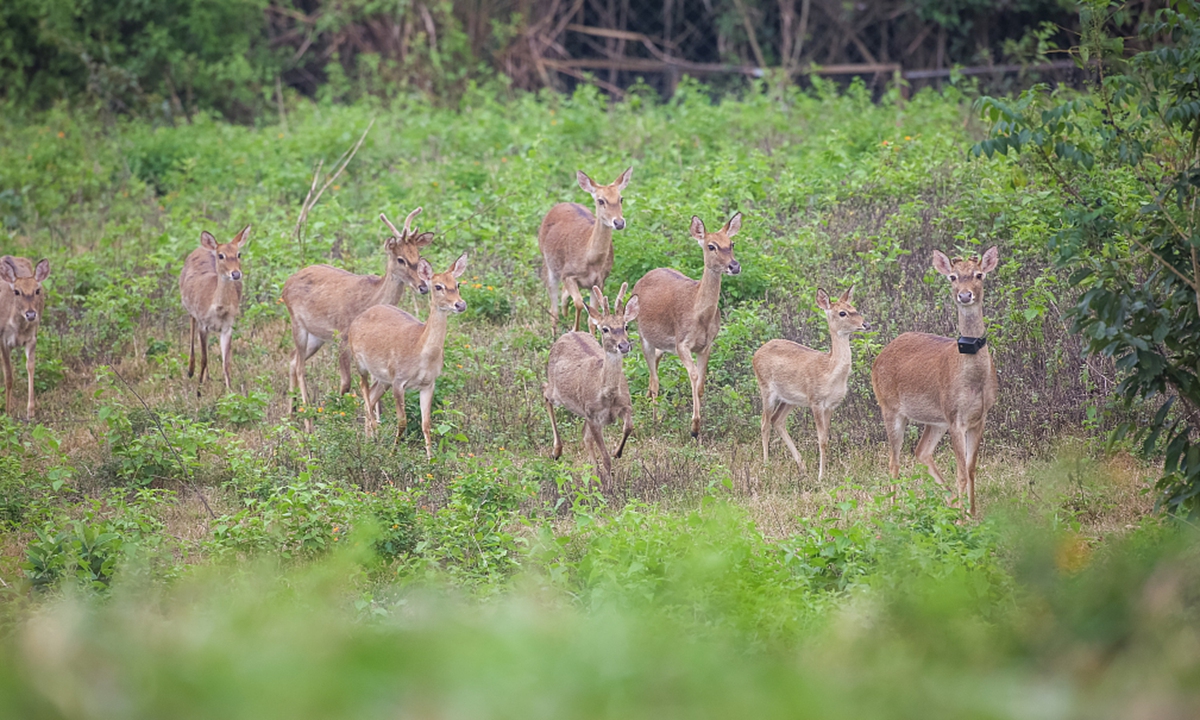CHINA / ENVIRONMENT
Jointly building a green Belt and Road with concerted efforts to create synergies for global biodiversity conservation

Photo:VCG
Biodiversity conservation has always been a key component to ensure the high-quality development of the Belt and Road Initiative (BRI). At the Second Belt and Road Forum for International Cooperation, Chinese President Xi Jinping stressed, "The Belt and Road aims to promote green development. We may launch green infrastructure projects, make green investment and provide green financing to protect the Earth which we all call home." Through building the green Belt and Road, the Chinese government actively establishes a green consensus with BRI participating countries, strengthens cooperation on global biodiversity conservation, and moves together towards the 2050 vision of "Living in Harmony with Nature".
First, set up a platform for cooperation to foster the consensus and facilitate actions on biodiversity conservation. The Ministry of Ecology and Environment of China (MEE) and partners from home and abroad have jointly initiated the BRI International Green Development Coalition (BRIGC), with the purpose to build a cooperation platform for green BRI development and achieving the 2030 sustainable development goals together with BRI participating countries. The BRIGC now has more than 150 partners from over 40 countries, and launched 10 thematic partnerships including biodiversity and ecosystem management to jointly carry out such activities as exchanges on biodiversity conservation.
Second, strengthen information sharing to provide science and data-based support for biodiversity conservation. Active efforts will be taken to further develop the BRI Environmental Big Data Platform to better gather and share the environmental laws, regulations and standards of BRI participating countries, and provide governments, businesses, organizations, and individuals with data services and support for decision-making. At present, biodiversity-related data from more than 100 countries have been included in this Big Data Platform.
Third, build capacities to jointly improve biodiversity conservation. The MEE is implementing the Green Silk Road Envoys Program to enhance capacity-building on environmental protection with BRI participating countries. More than 2,000 participants, including government environmental officials, technological staff, and practitioners, from 120 countries have joined the training programs to discuss a variety of topics ranging from ecosystem assessment and management to green infrastructure development.
Fourth, push forward green recovery and share the concept and practices of ecological civilization. The world is at the critical moment of combating the COVID-19 pandemic and planning for the green economic recovery. The Chinese government will continue to make good use of the existing bilateral and multilateral cooperation and exchange channels for BRI green development, and share China's ecological concepts and environmental practices, especially those on ecological redlining and the national park system development. In the meantime, continued efforts will be made to promote green infrastructure development, with much closer attention to the impacts of infrastructure related projects on biodiversity. Environmental risk assessment will be established gradually and green solutions be developed accordingly.
Fifth, make coordinated efforts to jointly achieve green development goals. The BRI participating countries are blessed with highly diverse and complex eco-environment. In particular, some resource-rich regions are ecologically fragile and sensitive, which are challenged by the difficulties of biodiversity conservation and sustainable development. As the BRI and 2030 Agenda for Sustainable Development are highly compatible, complementary, and coordinated in terms of concepts, principles, and goals, they can work together to help relevant countries leapfrog traditional development stages and better implement the post-2020 global biodiversity conservation framework.
To realize the vision of living in harmony with nature needs the joint efforts of the international community. As an expression of Chinese wisdom and a Chinese solution to global environmental governance, jointly building the green Belt and Road will continue to provide the world with green public goods, and make its due contribution to building a community with shared future for mankind.
The author is Executive Director General of the Foreign Environmental Cooperation Center at the Ministry of Ecology and Environment
